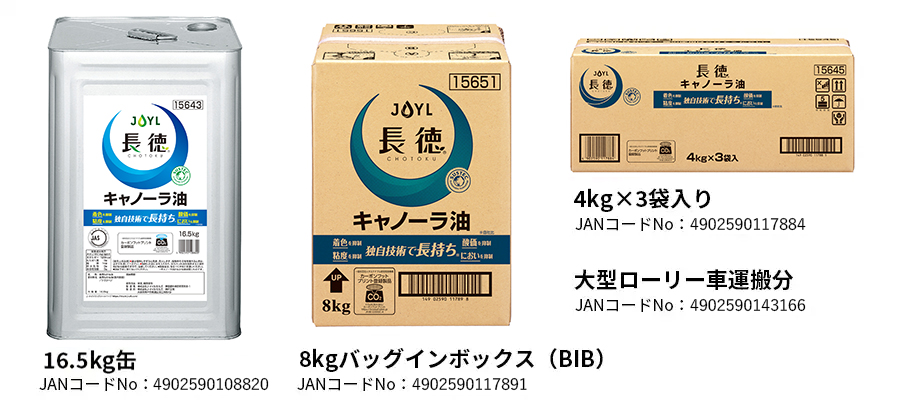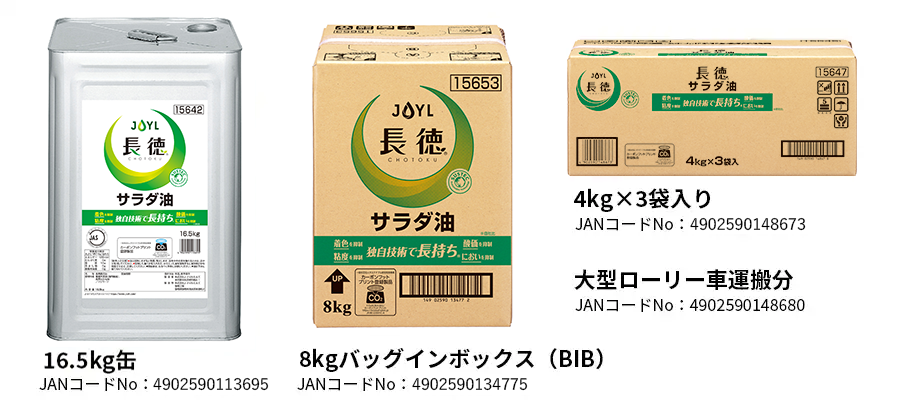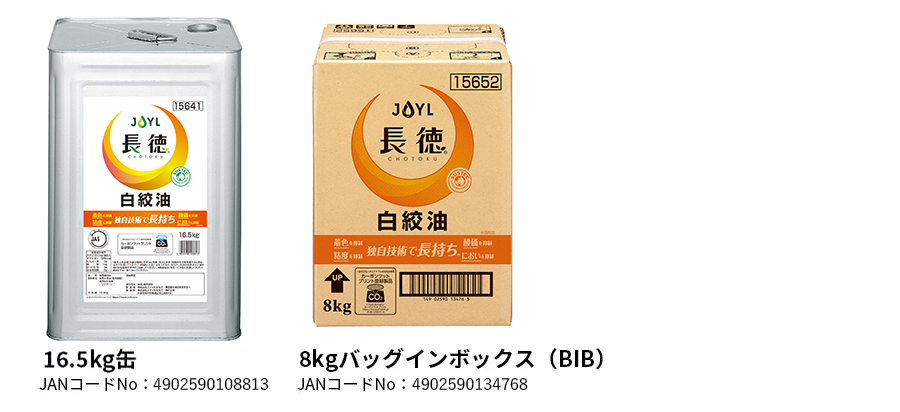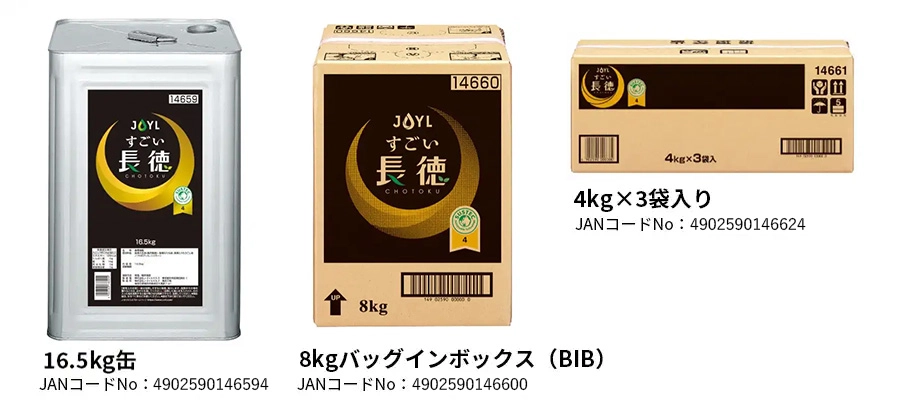Carbon Footprint (CFP)
Overview
At J-OIL MILLS, we evaluate the environmental impact of our products by calculating their carbon footprint (CFP).
"Cho Toku" series
"Cho Toku The " series has obtained the CFP (Carbon Footprint of Products) mark*1.
In May 2021, we launched the "Cho Toku " We first obtained the CFP mark for our 16.5 kg Canola Oil, and have continued to acquire certification for the series since then. With the additional certification in August 2023, "Cho Toku" series has acquired the CFP mark for 16 products.
This calculation shows that compared to our company's general canola and soybean, CO2 emissions are reduced by 21-26% throughout the entire life cycle, from raw material procurement to disposal. The reduction effect was recognized. The CFP mark is certified by a third-party organization, the Sustainable Management Promotion Organization (SuMPO)*2, and complies with the international standard ISO/TS14067:2013 (Product Carbon Footprint - Requirements and guidelines for calculation and communication).
CO2 emissions from all stages of the life cycle, including raw material procurement, production, distribution, use and maintenance, and disposal and recycling. The CO2 reduction effect was calculated based on the amount of product used in a model store over a one-year period. As a result of calculating the Cho Toku, The "Sugoi Cho Toku" series uses 20-21% less CO than regular canola and soybean, while the "Sugoi Chotoku" series uses 28% less CO2. It was found that emissions can be reduced (the calculation does not include the environmental impact of heating oil when cooking food). *3
■Products that have acquired the CFP mark
| product name | Packing (product image) | Features |
|---|---|---|
| "Cho Toku" Canola Oil |  |
A frying oil that lasts 30% longer than canola. Product type: Edible canola |
| "Cho Toku®" Healthy Type C |  |
This is a frying oil that lasts 30% longer than canola, and our proprietary technology reduces the absorption of oil into the batter. Product type: Edible canola |
| "Cho Toku®" Salad Oil |  |
This frying oil is a blend of soybean and canola that lasts 30% longer. Product type: Edible blended oil |
| "Cho Toku®" Cooking Oil |  |
canola frying oil is a blend of Cooking Oil and Cooking Oil soybean oil that lasts 30% longer. Product type: Edible blended oil |
| Great Cho Toku |  |
A blend of soybean and canola oil, this frying oil lasts 30% longer. Product type: edible oils |
